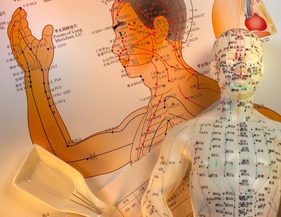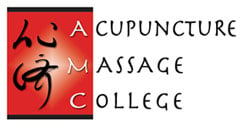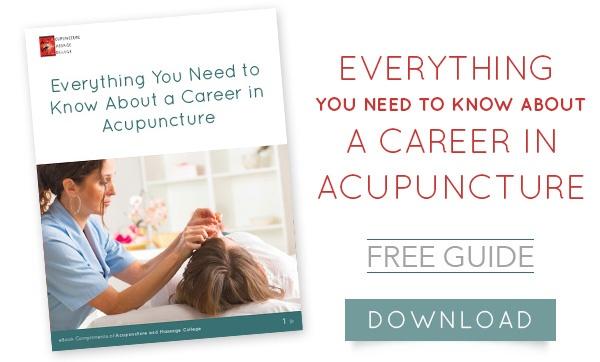 The acupuncture points chart is a complex map of the human body used by practitioners of traditional Chinese medicine in diagnosing and treating patients. Originally highlighting 365 points — a figure that corresponds to the number of days in a year — acupuncture professionals have since identified many more points and channels between them. Applying a firm pressure to manipulate these points helps stimulate the body's natural healing abilities to facilitate the flow of qi — or life force energy — throughout the body in order to achieve a healthy and harmonious balance. The condition of the patient and their specific ailments will determine which points the practitioner will focus on during a treatment session.
The acupuncture points chart is a complex map of the human body used by practitioners of traditional Chinese medicine in diagnosing and treating patients. Originally highlighting 365 points — a figure that corresponds to the number of days in a year — acupuncture professionals have since identified many more points and channels between them. Applying a firm pressure to manipulate these points helps stimulate the body's natural healing abilities to facilitate the flow of qi — or life force energy — throughout the body in order to achieve a healthy and harmonious balance. The condition of the patient and their specific ailments will determine which points the practitioner will focus on during a treatment session.
Schedule an appointment
If you want to learn more about the acupuncture points and have never been treated by a practitioner of Oriental medicine, schedule an appointment for acupressure or acupuncture. Talk to your practitioner about any health issues you have and ask which points will be targeted during treatment to correct imbalances you may be experiencing. Find out how the points connect to the affected organs and system in your body. Obviously, what you learn in a single treatment, or even a handful of treatments, will only be a snapshot of the acupuncture points chart, but it will help you begin to understand both some specific points on the chart along with how treatment works.
Read and do research
Plenty of resources exist online, in bookstores and at the library to introduce you to the acupuncture points chart. Avail yourself of available resources to familiarize yourself with the chart and identify the points used for treating common ailments. Here are six points that are frequently used by practitioners and some common ailments they treat:
1. Gallbladder 20 (GB20): Feng Chi
Headaches, eye bluriness, cold/flu symptoms
2. Large Intestine 4 (L14): He Gu
Stress, toothaches, facial and neck pain
3. Liver 3 (LV3): Tai Chong
Stress, low back pain, high blood pressure, insomnia
4. Pericardium 6 (P6): Nei Guan
Nausea, anxiety, carpal tunnel syndrome
5. Spleen 6 (SP6): San Yin Jiao
Urological and pelvic disorders, fatigue, insomnia
6. Stomach 36 (ST36): Zu San Li
Depression, knee pain, gastrointestinal issues
The above is, of course, only a small sampling of points found on the human body and the health problems they can help alleviate.
Go to school for acupuncture
The best and most thorough way to learn the acupuncture points chart is by entering an accredited program at an institution of higher learning that teaches traditional Chinese medicine. There you'll be immersed in classes that include human anatomy, physiology and acupuncture taught by experts in the field. Your training will not only give you a deep understanding of the chart, but how to identify the points on the human body and how they work in the treatment of a broad range of health issues.
For information about AMC’s Oriental Medicine and Massage Therapy programs you can email our admissions department. Download our free ebook to learn more about what to expect from a career in the exciting and growing field of alternative medicine.

 (305) 595-9500
(305) 595-9500







